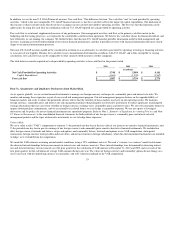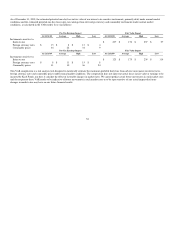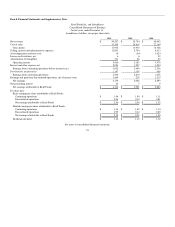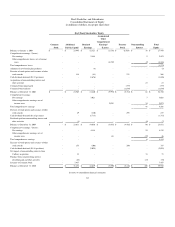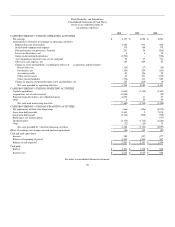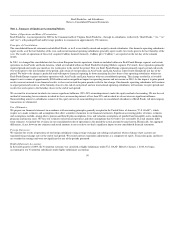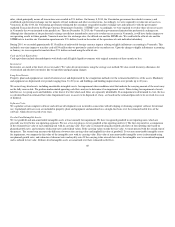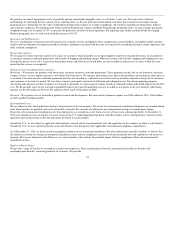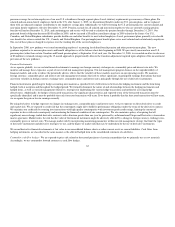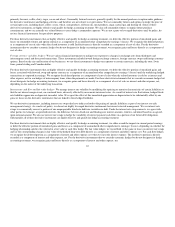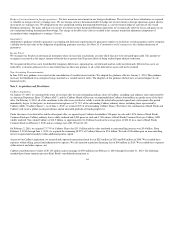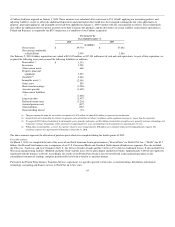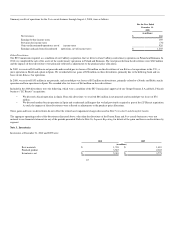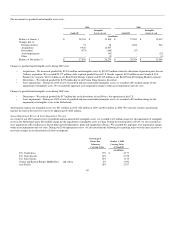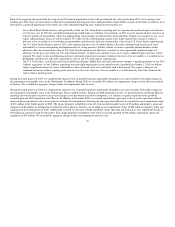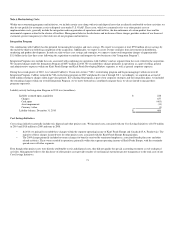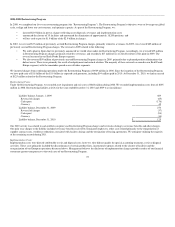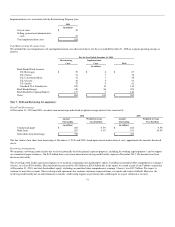Kraft 2010 Annual Report Download - page 66
Download and view the complete annual report
Please find page 66 of the 2010 Kraft annual report below. You can navigate through the pages in the report by either clicking on the pages listed below, or by using the keyword search tool below to find specific information within the annual report.
primarily for meat, coffee, dairy, sugar, cocoa and wheat. Commodity forward contracts generally qualify for the normal purchase exception under guidance
for derivative instruments and hedging activities, and therefore are not subject to its provisions. We use commodity futures and options to hedge the price of
certain input costs, including dairy, coffee, cocoa, wheat, corn products, soybean oils, meat products, sugar, natural gas and heating oil. Some of these
derivative instruments are highly effective and qualify for hedge accounting treatment. We also sell commodity futures to unprice future purchase
commitments, and we occasionally use related futures to cross-hedge a commodity exposure. We are not a party to leveraged derivatives and, by policy, do
not use financial instruments for speculative purposes.
For those derivative instruments that are highly effective and qualify for hedge accounting treatment, we defer the effective portion of unrealized gains and
losses on commodity futures and option contracts as a component of accumulated other comprehensive earnings / (losses). We recognize the deferred portion
as a component of cost of sales when the related inventory is sold. Ineffectiveness is directly recorded as a component of cost of sales. For the derivative
instruments that we consider economic hedges but do not designate for hedge accounting treatment, we recognize gains and losses directly as a component of
cost of sales.
Foreign currency cash flow hedges - We use various financial instruments to mitigate our exposure to changes in exchange rates from third-party and
intercompany actual and forecasted transactions. These instruments include forward foreign exchange contracts, foreign currency swaps and foreign currency
options. Based on the size and location of our businesses, we use these instruments to hedge our exposure to certain currencies, including the euro, Swiss
franc, pound sterling and Canadian dollar.
For those derivative instruments that are highly effective and qualify for hedge accounting treatment, we defer the effective portion of unrealized gains and
losses associated with forward, swap and option contracts as a component of accumulated other comprehensive earnings / (losses) until the underlying hedged
transactions are reported in earnings. We recognize the deferred portion as a component of cost of sales when the related inventory is sold or as interest and
other expense, net for our hedges of intercompany loans, when the payments are made. For those derivative instruments that we consider economic hedges but
do not designate for hedge accounting treatment, we recognize gains and losses directly as a component of cost of sales or interest and other expense, net,
depending on the nature of the underlying transaction.
Interest rate cash flow and fair value hedges - We manage interest rate volatility by modifying the repricing or maturity characteristics of certain liabilities so
that the net interest margin is not, on a material basis, adversely affected by movements in interest rates. As a result of interest rate fluctuations, hedged fixed-
rate liabilities appreciate or depreciate in market value. We expect the effect of this unrealized appreciation or depreciation to be substantially offset by our
gains or losses on the derivative instruments that are linked to these hedged liabilities.
We use derivative instruments, including interest rate swaps that have indices related to the pricing of specific liabilities as part of our interest rate risk
management strategy. As a matter of policy, we do not use highly leveraged derivative instruments for interest rate risk management. We use interest rate
swaps to economically convert a portion of our nonprepayable fixed-rate debt into variable-rate debt. Under the interest rate swap contracts, we agree with
other parties to exchange, at specified intervals, the difference between fixed-rate and floating-rate interest amounts, which is calculated based on an agreed-
upon notional amount. We also use interest rate swaps to hedge the variability of interest payment cash flows on a portion of our future debt obligations.
Substantially all of these derivative instruments are highly effective and qualify for hedge accounting treatment.
For those derivative instruments that are highly effective and qualify for hedge accounting treatment, we either record the impacts in current period earnings
or defer the effective portion of unrealized gains and losses as a component of accumulated other comprehensive earnings / (losses), depending on whether the
hedging relationship satisfies the criteria for a fair value or cash flow hedge. For fair value hedges, we record both (i) the gains or losses on interest rate swaps
and (ii) the corresponding changes in fair value of the hedged long-term debt directly as a component of interest and other expense, net. For cash flow hedges,
we recognize the deferred portion as a component of interest and other expense, net when we incur the interest expense. The ineffective portion is directly
recorded as a component of interest and other expense, net. For the derivative instruments that we consider economic hedges but do not designate for hedge
accounting treatment, we recognize gains and losses directly as a component of interest and other expense, net.
63


